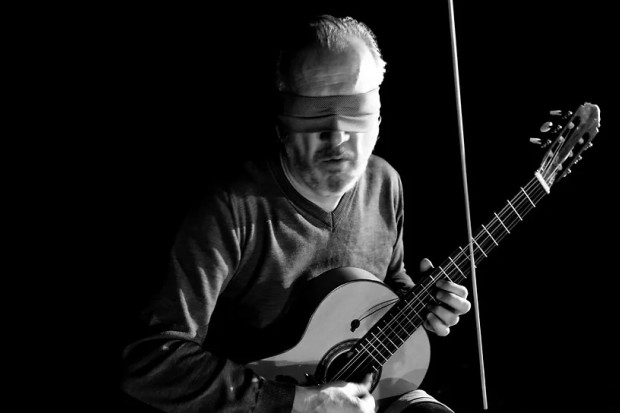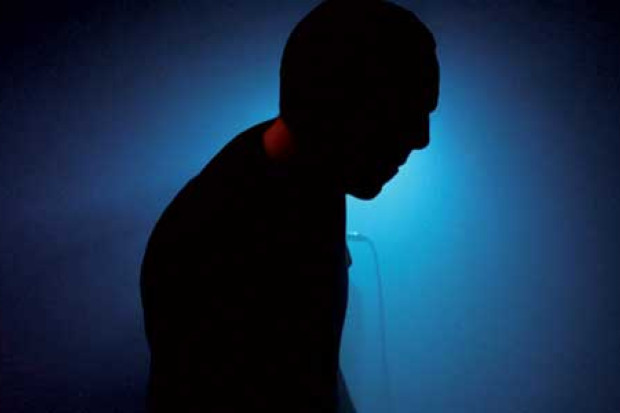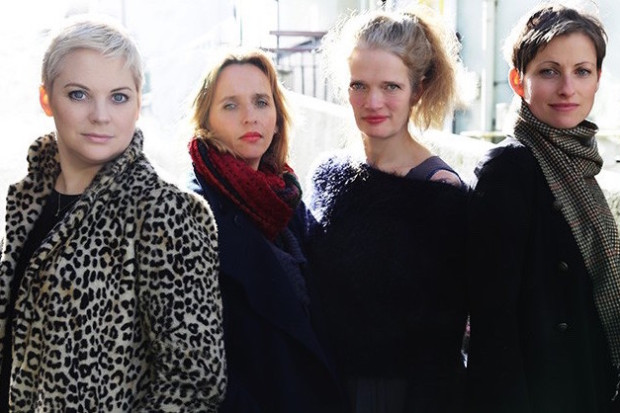
Sensuality Matters
The end is near, always. Yet the end may never come. Those who grew up during the latter days of the Cold War have an ambiguous attitude towards endings. We dread them obviously, for the destruction they portend. We fantasise about them, thanks to post-apocalyptic films that posit an afterwards to nuclear destruction. And we also feel a certain degree of scepticism about them. The end that I grew up fearing as the daughter of an American defence industry contractor never happened. The fallout shelters in my neighborhood served merely as storage spaces. The more I was told to expect the end, the more things remained the same.
Yet apocalyptic dread is still present – in art and the philosophy of art, among other places. Since I now teach and write about music, I hear most frequently about its impending demise: how the freewheeling days of unauthorised hip-hop sampling are over; how school budget cuts are further chipping away at children’s already scant knowledge of Western art music; or how Auto-Tune has supposedly demonstrated the irrelevance of talent in popular music. Most of these fears about the end are knee-jerk reactions to recent developments to which we’ll grow accustomed over time. But there is one fear of the end that is not new, that has been expressed on many fronts for the past two hundred years, and that seems at no risk of going away. This is the fear of, or perhaps longing for, the end of art.
The German philosopher Hegel was the first to proclaim the impending demise of art. In his aesthetics lectures given at the University of Berlin in the 1820s, he broke the history of art into three periods, each of which achieved a different ratio of spiritual to sensual: symbolic, classical and romantic. The ‘symbolic’ period, he argued, produced works of imitation whose sensuous characteristics dwarfed the spiritual content. The ‘classical’ period achieved a balance between the external and the internal. In the ‘romantic’ period, spiritual content began to occlude the external, sensual features; art, in other words, began to assume spiritual dimensions. Hegel felt that European culture had arrived at the end of the romantic period and was entering a new phase in which the philosophical discourse addressing art would eclipse artistic practice: ‘The peculiar nature of artistic production and of works of art no longer fills our highest need… The impression they make is of a more reflective kind, and what they arouse in us needs a higher touchstone and a different test. Thought and reflection have spread their wings above fine art… The form of art has ceased to be the supreme need of spirit.’
Hegel’s point is that art has so evolved that the internal has transcended the external. Art’s outward features – its sensuousness, its form – matter less, while the ideas it contains as well as generates – through critics, philosophers and audiences – matter more. The philosophy of art, in other words, now replaces art. Hegel does not mourn this development, but rather sees it as a natural consequence of the spirit’s continuing search for truth. The conversations and debates we have about art were now more important than the art itself.
Variations on Hegel’s theme have permeated modernist and postmodernist aesthetics and a long list of writers have formed their own ideas about the end of art, including Arthur Danto, Theodor Adorno, Peter Bürger, Tony Smith and Susan Sontag. With the exception of Adorno, all these writers regarded the end of art as a positive development, an opportunity for artists to innovate. (Adorno, too, saw something redemptive in the dying away of European tradition, provided artists and audiences could retain their critical faculties.) And, of course, everyone from Hegel onwards maintains that this end of art does not constitute the end of artistic activity. Artists continue to make art.
By Hegel’s watch, we are almost two hundred years into the end time of art. Plenty has happened in those intervening years – the schism between high and popular cultures; the development of new technologies; the growing acceptance of artistic practices from previously disenfranchised groups. But still, considering the echoes of Hegel’s theories in recent theories of art, let’s assume that the end is still imminent. So what does that end sound like?
Recent electronic music shows all the symptoms of an art that is questioning all of the rules that once governed it, and thus of an art that is supposedly coming to an end. Electronic music since the early twentieth century has legitimised noise as musical material; it has also rendered common acousmatic music, in which the sight of sound production is hidden from view; and the various forms of electronica, from dance genres like techno and house to the ethnographically-inclined genres of soundscape and field recording, encourage listening practices quite distinct from those expected in late romantic and modernist Western art music. And yet, electronic music remains a phenomenon to which we listen as an aesthetic object.
The pitfall with theories like Hegel’s, convincing though they are, is that they implicitly urge the audience to take a side, to consider the act of listening as a necessarily political act. Make no mistake – such encouragement is a good thing, because art is better off when people argue about its meaning. But, in the case of electronic music at least, listeners and creators have so long participated in the debate over whether sound possesses (or should possess) meaning that we frequently fall silent on the other aspects of the listening process. This is most apparent in genres like electronic dance music, where synthesiser sounds are associated with futurism, or electronica, where the pops and scratches (whether simulated or real) of records signify the age of a sound. In other contexts, sound exists as an inert object, a phenomenon that signifies nothing. Pierre Schaeffer, inventor of musique concrète, advocated the discipline of ‘reduced listening’ in which listeners would attempt to disregard the perceived associations of any sound. Post-Schaefferian genres like microsound, which uses minuscule quanta of sound as building blocks, also insist on the inscrutability of sound.
But there is also the physicality of sound, and this physicality is the most challenging aspect about the listening experience. It defies words. We will find it very difficult to describe what we like or dislike about sound in casual conversation, let alone in academic or journalistic forums. We can use technical language to pinpoint measurable data about sound, but once we begin to talk about the feelings and thoughts invoked by sound, we lean on metaphor. And metaphor makes many Western music listeners nervous, because it intimates that sound cannot exist on its own, but must constantly attach itself to some greater meaning outside of music.
Sontag, in her essay ‘Against Interpretation’, cried out for the abandonment of literary criticism that attempts to explain the content of writing, and that in the process overlooks the sensuous aspects that make writing readable and capable of creating delight in readers. I’m not advocating against interpretation as Sontag does. Psychoacousticians like William Gaver have demonstrated empirically that we are biologically programmed to interpret sound, to speculate as to its sources, physical origins and meanings. To advocate against the interpretation of sound would be pure folly. Yet part of this interpretation entails a mute, wordless immersion – an experience of sound. We have great difficulty describing this experience, but it nonetheless assures us that music has not reached an end, because all of the philosophising in the world cannot duplicate what it feels like to hear a sound.
Electronic drone music is an example of a genre that we can hear both as a sign with meaning and an object that signifies nothing, but also as something we hear purely for its physical, rapturous sensual qualities. It’s exceedingly difficult to talk or write about drone music, but a few things can be said. First, the differences between a work like French composer Éliane Radigue’s Trilogie de la mort (1998) and the American Jim O’Rourke’s Long Night (1990) are astonishing. If drone music at its essence is comprised of sustained pitches or chords, there is still great room for variability in terms of how those durations are maintained. Radigue’s sustained pitches throb in regular rhythms, while O’Rourke’s chords chafe against each other in perpetual stasis. Radigue’s and O’Rourke’s works are both explorations of single, sustained sounds, while a work like the Californian duo Celer’s In Escaping Lakes (2009) contains sounds that seem to fade in and out of existence in no particular pattern, whether harmonic or temporal. All drone works render irrelevant the concept of duration. A good drone work can last fifteen minutes or five hours – either length is legitimate and successful. But we have still not approached what listening to drone music feels like. Fans fall mute after describing these sounds as beautiful. For many, including myself, they are beautiful in a way that draws the ears and attention inward, as if to listen to the soul.
The trouble here is that seasoned electronic music fans could receive a drone work either as a sign – a means of communicating whatever apt metaphor could be linked to their sounds – or as an object – an abstract set of sounds that function autonomously, pointing to nothing outside themselves. Both approaches are valid; I’ve been able to convince myself that reductive listening is the only proper way to hear a drone recording, only to return to the same work at a later point and hear it as one long, extended metaphor. The theories concerning sound’s ability to bear meaning or evade meaning are part of, but only part of, the experience of listening to electronic music. The sensuous aspect of sound as sound is still present, too, as beguiling now as it has been at any point in history.
Published on 1 June 2010
Joanna Demers is Associate Professor of Musicology at the Thornton School of Music, University of Southern California. She is the author of Listening Through the Noise: The Aesthetics of Experimental Electronic Music, to be published by Oxford University Press in July.













